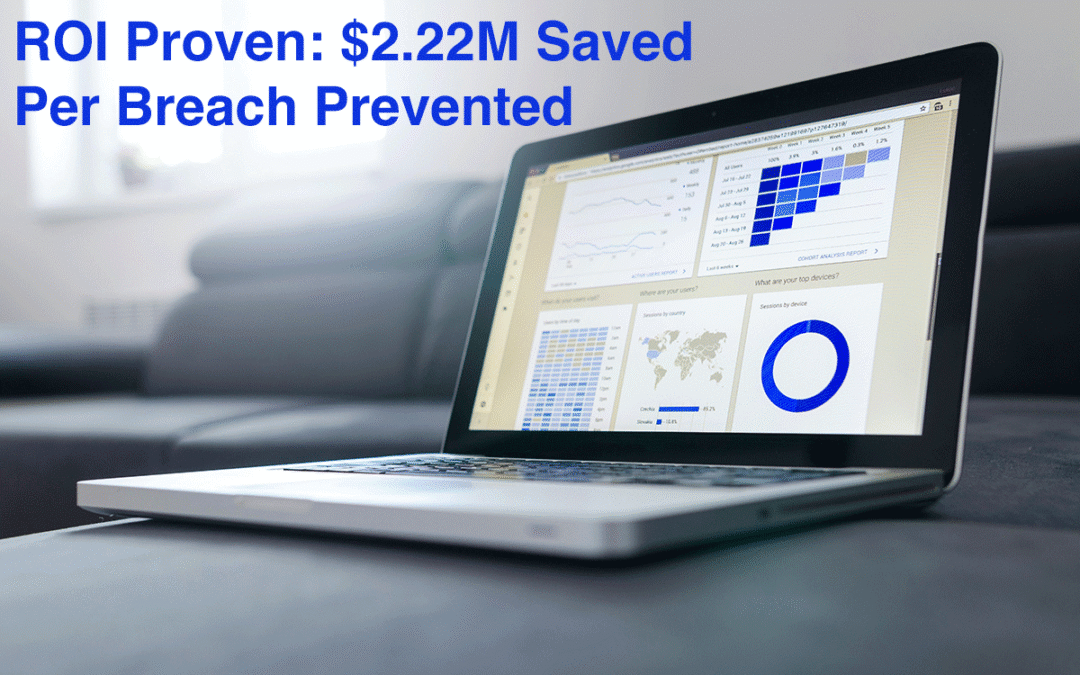How Data-Driven Metrics Transform Risk Management into Business Value
In an era where organizations face evolving threats across both digital and physical domains, security leaders struggle with a fundamental challenge: demonstrating tangible value from investments that primarily prevent negative outcomes. While executive teams readily understand revenue growth and cost reduction, articulating security’s contribution to organizational success requires a more sophisticated approach—one grounded in meaningful metrics and strategic alignment with business objectives.
The Business Case for Security Measurement
Security investments traditionally suffer from what economists call the “prevention paradox”—when protection works effectively, nothing visible happens. This creates a perception challenge where security appears as pure cost rather than value creation. According to PwC’s 2023 Global Consumer Insights Survey, 73% of consumers point to customer experience as an important factor in their purchasing decisions, with trust being a key component¹. Additionally, organizations with mature security programs that consistently maintain compliance experience significantly lower breach rates compared to those with compliance failures, according to Verizon’s 2024 Data Breach Investigations Report².
The financial implications extend far beyond immediate incident costs. According to IBM’s 2024 Cost of a Data Breach Report, the average data breach in 2024 cost organizations $4.88 million, yet this figure only captures direct expenses³. Brand damage, customer attrition, and operational disruption can multiply these costs over years. Forward-thinking organizations now recognize security not as insurance but as a business enabler that protects revenue streams, maintains operational continuity, and builds competitive advantage through customer trust.
Building Visibility Through Strategic Measurement
Effective security management demands comprehensive visibility into operations, threats, and performance. Without clear insight into security activities and their outcomes, organizations operate blindly, making decisions based on assumptions rather than evidence. This visibility serves three critical purposes:
Risk Identification and Prioritization: Data-driven insights reveal vulnerability patterns, threat trends, and control effectiveness, enabling teams to allocate resources where they matter most.
Performance Optimization: Continuous measurement identifies process inefficiencies, technology gaps, and training needs, driving incremental improvements in security capabilities.
Strategic Communication: Quantified results translate technical security achievements into business language that resonates with executives, board members, and other stakeholders.
The key lies not in measuring everything possible, but in selecting metrics that provide actionable intelligence aligned with organizational priorities.
Distinguishing Activity from Impact
Many security programs fall into the trap of reporting operational statistics that, while important for internal management, fail to demonstrate business value. Understanding the distinction between activity metrics and value metrics fundamentally changes how security communicates its worth.
Activity Metrics: The Internal Dashboard These operational indicators track what security teams do daily:
- Number of incidents investigated
- Security assessments completed
- Access badges issued or revoked
- Training sessions delivered
- Patrol routes completed
While essential for managing security operations and identifying process improvements, activity metrics alone tell an incomplete story. They answer “what” but not “why it matters.”
Value Metrics: The Executive Language Strategic metrics connect security performance to business outcomes:
- Revenue Protection: Operational uptime maintained, business disruption prevented
- Cost Avoidance: According to IBM’s 2024 report, breaches contained under 200 days cost $3.93 million on average, compared to $4.95 million for longer incidents—a 20.6% savings³
- Risk Reduction: Decrease in high-severity vulnerabilities, improved compliance scores
- Efficiency Gains: Reduced incident resolution time, automated threat response
- Strategic Enablement: Faster product launches due to integrated security, new business opportunities from enhanced trust
Organizations that prioritize security see higher customer retention rates, with research from Cisco’s 2024 Data Privacy Benchmark Study showing that privacy-mature companies report 2x better business outcomes⁴.
Essential Metrics for Modern Security Programs
Response and Recovery Metrics
Mean Time to Detect (MTTD): The average duration between when a security incident occurs and when it’s discovered. Industry leaders achieve detection within hours rather than the months that characterized historical breaches.
Mean Time to Respond (MTTR): Measures how quickly teams mobilize after detection. According to Mandiant’s 2024 M-Trends Report, organizations with proactive incident response plans recover significantly faster from cyberattacks⁵.
Mean Time to Contain (MTTC): Tracks the speed of threat isolation and mitigation. Rapid containment directly correlates with reduced financial impact and operational disruption.
Financial Impact Metrics
Cost per Incident: Beyond direct response costs, this includes productivity loss, system downtime, and recovery expenses. Tracking trends reveals whether security investments effectively reduce incident impact.
Security ROI Calculation: According to IBM’s research, enterprises save an average of $2.22 million by using security AI and automation to prevent breaches³. Calculate ROI by comparing prevention savings against security spending.
Insurance Premium Reduction: Mature security programs often qualify for lower cybersecurity insurance rates, providing measurable financial benefit.
Risk and Compliance Metrics
Risk Score Trending: Aggregate risk assessments showing improvement over time demonstrate security program maturity and effectiveness.
Compliance Achievement Rate: Beyond pass/fail, track the ease of achieving compliance. Mature programs integrate compliance into operations rather than treating audits as disruptive events.
Third-Party Risk Exposure: According to Gartner’s 2024 research, 45% of organizations worldwide will have experienced attacks on their software supply chains by 2025, making vendor risk metrics critical⁶.
Operational Excellence Metrics
Automation Rate: The percentage of security tasks handled automatically versus manually. Higher automation correlates with faster response and reduced human error.
False Positive Rate: Lower rates indicate better-tuned security tools and more efficient use of analyst time.
Security Debt: Accumulated vulnerabilities, outdated systems, and delayed patches that increase risk over time. Tracking and reducing security debt prevents future incidents.
Implementing Effective Measurement Programs
Start with Strategic Alignment Before selecting metrics, understand organizational priorities. A healthcare provider might prioritize patient data protection and regulatory compliance, while a retailer focuses on payment security and operational availability. Align metrics with what matters most to executive leadership and the board.
Establish Baselines and Targets Without historical context, metrics lack meaning. Establish baseline measurements before implementing new security initiatives, enabling clear demonstration of improvement. Set realistic targets based on industry benchmarks and organizational maturity.
Create Feedback Loops Metrics should drive action, not just reporting. Establish processes for reviewing metric trends, identifying improvement opportunities, and implementing changes. Regular review cycles ensure metrics remain relevant as threats and business priorities evolve.
Balance Leading and Lagging Indicators Lagging indicators show what happened (incidents detected, breaches prevented), while leading indicators predict future performance (vulnerability scan coverage, security training completion). Both provide essential insights for comprehensive security management.
Communicating Security Value to Leadership
Transform Data into Stories Numbers alone rarely inspire action. Combine metrics with narrative context that explains what happened, why it matters, and what comes next. For example, rather than reporting “MTTR decreased 30%,” explain how faster response prevented a potential data breach that could have cost millions and damaged customer trust.
Focus on Business Outcomes Frame security achievements in business terms:
- “We maintained 99.98% availability of critical systems, protecting $2.5M in daily revenue”
- “Proactive threat hunting prevented three potential breaches, avoiding an estimated $12M in incident costs”
- “Enhanced security controls enabled expansion into new markets requiring advanced compliance”
Use Visual Communication Dashboards, trend graphs, and heat maps make complex security data accessible to non-technical audiences. Executive dashboards should emphasize strategic metrics while providing drill-down capability for those wanting details.
Regular Cadence with Varied Depth Provide monthly strategic summaries, quarterly deep dives, and annual program reviews. This rhythm keeps security visible without overwhelming stakeholders while ensuring appropriate scrutiny of long-term trends and strategic initiatives.
Evolving Metrics for Emerging Challenges
As threats evolve and business models transform, security metrics must adapt. Cloud adoption requires new measurements around shared responsibility and configuration management. Remote work demands metrics for endpoint security and zero-trust implementation. Supply chain attacks necessitate enhanced third-party risk indicators.
Emerging considerations include:
- AI and Automation Impact: Measuring how machine learning improves threat detection and response
- Human Factor Metrics: Tracking security culture and behavior change, not just training completion
- Resilience Indicators: Beyond prevention, measuring recovery capability and business continuity
- Ecosystem Security: Evaluating security posture across partners, suppliers, and customers
The Path Forward: Security as Value Creator
Organizations that master security metrics transform their programs from cost centers to strategic assets. By demonstrating clear connections between security investments and business outcomes—reduced risk, protected revenue, enabled growth—security leaders earn trust, budget, and influence.
The journey requires commitment to continuous improvement, willingness to learn from both successes and failures, and dedication to translating technical achievements into business value. Start by selecting a few meaningful metrics aligned with organizational priorities, establish baselines, and demonstrate incremental improvement. As measurement maturity grows, expand the metric portfolio to provide comprehensive visibility into security performance and business impact.
Success in modern security isn’t just about preventing incidents—it’s about proving value, enabling business objectives, and building resilience in an uncertain world. Through strategic measurement and effective communication, security leaders can finally answer the perennial question: “What’s the return on our security investment?” The answer, when properly measured and communicated, positions security as an essential driver of business success rather than a necessary expense.
Key Takeaways
- Shift from activity to value metrics when communicating with executives, focusing on business outcomes rather than security operations
- Establish clear baselines before implementing new initiatives to demonstrate measurable improvement
- Align metrics with business priorities to ensure security investments support organizational goals
- Balance prevention with resilience, measuring not just what you stop but how quickly you recover
- Communicate in business language, translating technical achievements into financial and strategic impact
- Evolve metrics continuously as threats, technology, and business models change
The organizations that thrive in today’s threat landscape are those that view security not as a barrier to business but as an enabler of sustainable growth. Through disciplined measurement and strategic communication, security leaders can prove this value and secure the resources needed to protect and advance their organizations’ missions.
Sources:
-
- PwC. (2023). Global Consumer Insights Survey. PwC. https://www.pwc.com/consumerinsights
- Verizon. (2024). Data Breach Investigations Report. Verizon Business. https://www.verizon.com/business/resources/reports/dbir/
- IBM Security. (2024). Cost of a Data Breach Report 2024. IBM. https://www.ibm.com/reports/data-breach
- Cisco. (2024). Data Privacy Benchmark Study. Cisco Systems. https://www.cisco.com/c/en/us/about/trust-center/data-privacy-benchmark-study.html
- Mandiant. (2024). M-Trends 2024 Report. Mandiant. https://www.mandiant.com/m-trends
- Gartner. (2024). Top Trends in Cybersecurity. Gartner, Inc. https://www.gartner.com/en/articles/7-top-trends-in-cybersecurity-for-2024
About Gordon Security Solutions
Gordon Security Solutions is a comprehensive enterprise security risk management platform provider that empowers organizations to transform security from a cost center into a strategic business advantage.
Through an integrated suite of modules—including Risk Assessments, Incident Reports, Business Continuity, Task Management, Crisis Management, and Business Impact Analysis—Gordon Security Solutions helps security leaders demonstrate measurable value while protecting their organization’s most critical assets. The platform we provide eliminates manual processes, delivers real-time visibility, and provides the data-driven insights needed to make security decisions that align with business objectives.
Ready to elevate your security program? Connect with our team to discover how we’re helping organizations reduce operational costs, ensure compliance, and build security programs that drive business success.

